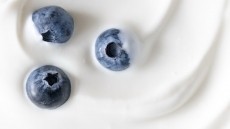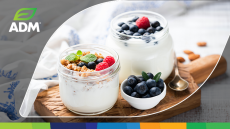Benzene reductions successful in soft drinks: study
researchers report results of a "before and after" test resulting
from the scares.
Researchers from ChemRisk, a consultancy, analysed 28 samples of Crystal Light Sunrise Classic Orange (CLSCO), reported by the FDA in May 2006 to contain benzene levels as high as 87.9 parts per billion (ppb).
The federal drinking water standard is five ppb.
"For purposes of this follow-up study, we focused on one particular product found to contain the highest levels of benzene in the FDA testing - CLSCO.
Other potential sources of exposure to benzene were not considered in this analysis," explained the researchers in the Journal of Food Science .
Since then, reformulation has occurred, and the researchers tested benzene concentrations in 500 mL (16 oz) original and new formulation bottles and one litre (64 oz) bottles.
Results showed that before and after, benzene levels in the 500 mL bottles were 90 and 0.18 ppb, respectively, while the larger bottles contained an average 3.38 ppb of benzene after reformulation.
The researchers used a variety of exposure scenarios to calculate potential health risks and found that "all cancer risk estimates and non-cancer hazards met the typical health risk benchmarks established by the U.S. regulatory agencies."
"It is important to note that ingestion rate assumed in this calculation (two litres per day) is equivalent to drinking more than four bottles of CLSCO per day, an unrealistic amount for most consumers," they added.
While the results are reassuring, they cannot be extended and generalized across the industry.
Benzene background Benzene is listed as a poisonous chemical shown to increase the risk of leukaemia and other cancers.
The FDA was originally alerted in 1990 to the problem of benzene in soft drinks triggered by two common ingredients - sodium benzoate and ascorbic acid (vitamin C) - which can react together to cause benzene formation.
It is considered completely separate from other outbreaks of benzene contamination due to faulty packaging in the 1990s.
The two ingredients are still used together in a wide range of soft drinks across the world.
The FDA has no standard for benzene in beverages other than bottled water, for which FDA has adopted the EPA's maximum contaminant level of 5 ppb for drinking water, as a quality standard.
An internal FDA memo dated December 1990 says soft drinks firms approached the agency concerned about benzene traces in their drinks.
Industry and FDA testing ensued.
No public announcement was ever made, and an FDA chemist there at the time told BeverageDaily.com
the agency privately agreed for the industry to "reformulate and get the word out".
Both he and the American Beverage Association admitted in 2006, however, that some companies, and particularly those formed since the problem arose, may have been left outside of the loop.
Food safety authorities around the world began testing drinks for benzene in light of the FDA's renewed investigation.
Work by independent scientist James Neal-Kababick exposed a problem.
Kababick, who claimed to have devised a better test for benzene, told BeverageDaily.com the FDA's procedure exposed drinks to heat, which could cause more benzene to form in the drink and so skew results in so-called off-the-shelf testing.
Source: Journal of Food Science Published online ahead of print, OnlineEarly Articles, doi: 10.1111/j.1750-3841.2008.00730.x "Assessment of Potential Human Health Risks Posed by Benzene in Beverages" Authors: L.C. Haws, J.A. Tachovsky, E.S. Williams, L.L.F. Scott, D.J. Paustenbach, and M.A. Harris















